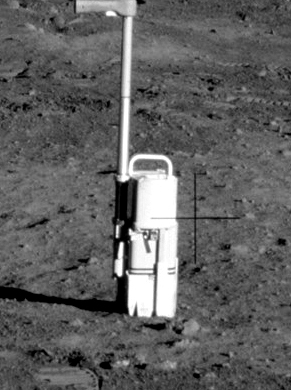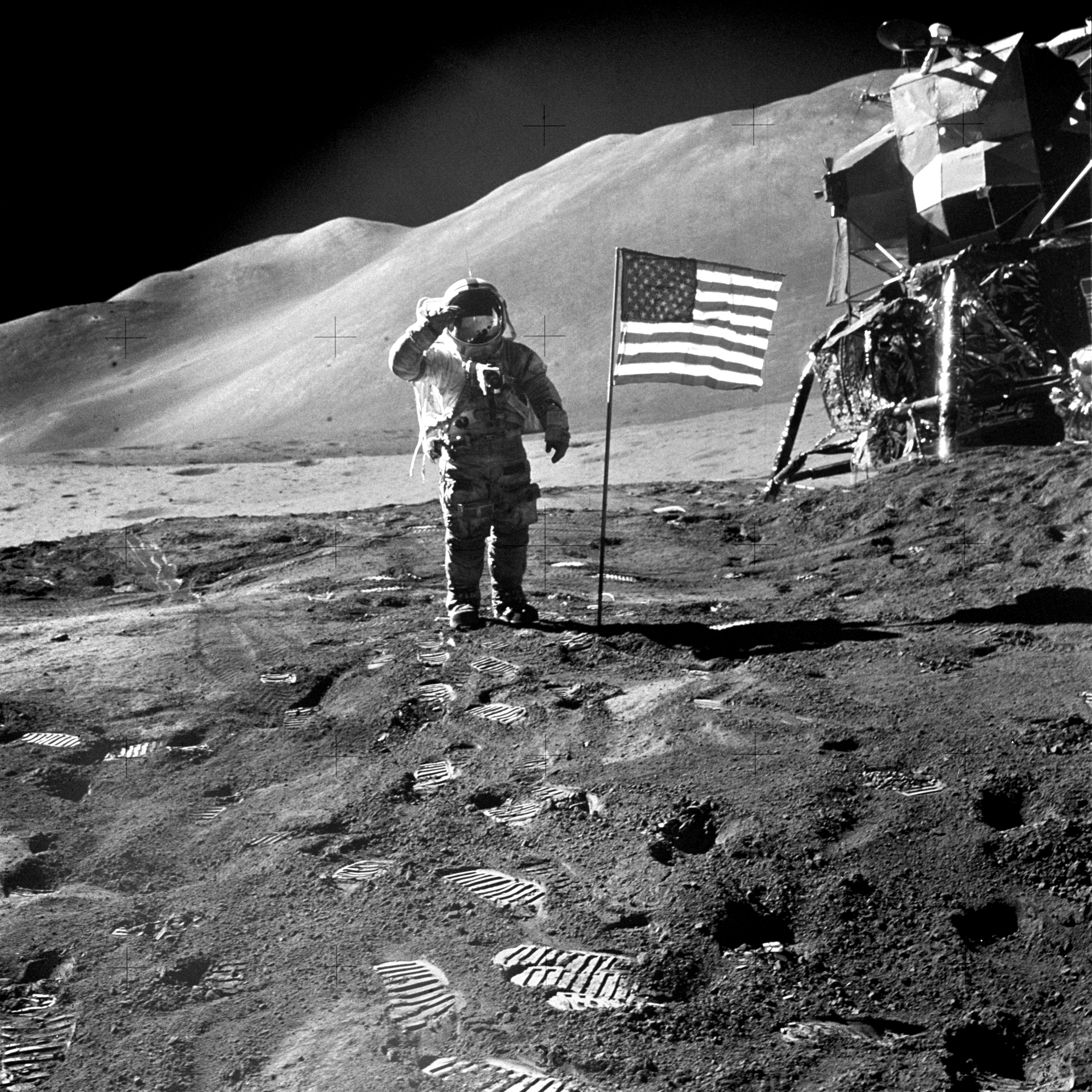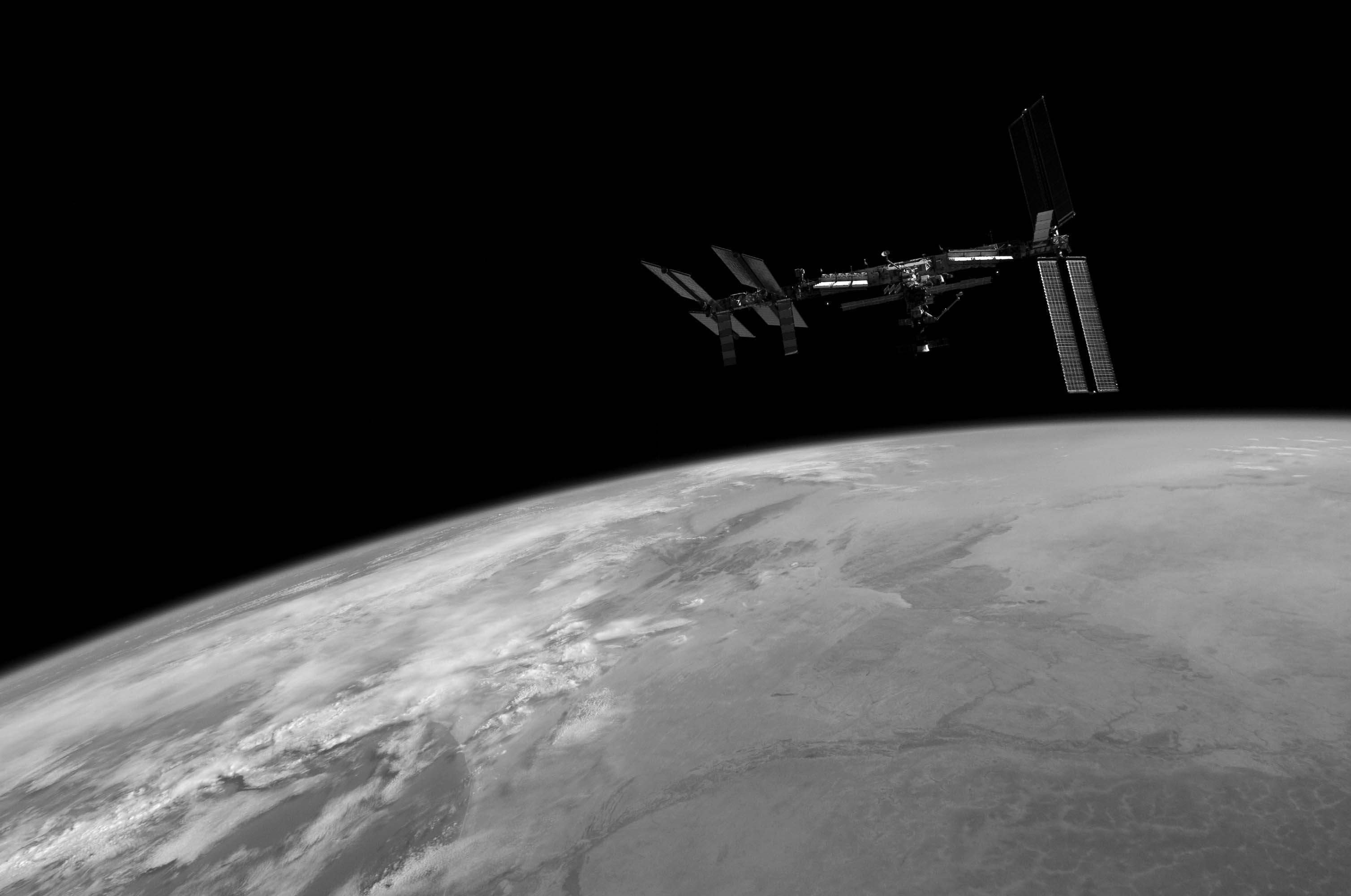Moon-landing conspiracists focus heavily on NASA photos. They point to oddities in photos and films taken on the Moon. Photography experts (including those unrelated to NASA) have replied that the oddities are consistent with what should be expected from a real Moon landing, and are not consistent with tweaked or studio imagery. Some main arguments and counter-arguments are listed below.
The cameras were fitted with a Réseau plate (a clear glass plate with a reticle etched on), making it impossible for any photographed object to appear “in front” of the grid. Conspiracists often use this evidence to suggest that objects were “pasted” over the photographs, and hence obscure the reticle.
This effect only appears in copied and scanned photos, not any originals. It is caused by overexposure: the bright white areas of the emulsion "bleed" over the thin black crosshairs. The crosshairs are only about 0.004 inches thick (0.1 mm) and emulsion would only have to bleed about half that much to fully obscure it. Furthermore, there are many photos where the middle of the crosshair is "washed-out" but the rest is intact. In some photos of the American flag, parts of one crosshair appear on the red stripes, but parts of the same crosshair are faded or invisible on the white stripes. There would have been no reason to "paste" white stripes onto the flag.

Enlargement of a poor-quality 1998 scan – both the crosshair and part of the red stripe have “bled out”

Enlargement of a higher-quality 2004 scan – crosshair and red stripe visible
This is a result of popular photos being cropped and/or rotated for aesthetic impact.
There are many poor-quality photos taken by the Apollo astronauts. NASA chose to publish only the best examples. The Apollo astronauts used high-resolution Hasselblad 500 EL cameras with Carl Zeiss optics and a 70 mm medium format film magazine.

David Scott salutes the American flag during the Apollo 15 mission.
the Apollo 11 astronauts also stated in post-mission press conferences that they did not remember seeing any stars during EVA.[88] Conspiracists contend that NASA chose not to put the stars into the photos because astronomers would have been able to use them to determine whether the photos were taken from the Earth or the Moon, by means of identifying them and comparing their celestial position and parallax to what would be expected for either observation site.
Stars are rarely seen in Space Shuttle, Mir, Earth observation photos, or even photos taken at sporting events held at night. The light from the Sun in outer space in the Earth-Moon system is at least as bright as the sunlight that reaches the Earth’s surface on a clear day at noon, so cameras used for imaging subjects illuminated by sunlight are set for a daylight exposure. The dim light of the stars simply does not provide enough exposure to record visible images. All manned landings happened during the lunar daytime. Thus, the stars were outshone by the sun and by sunlight reflected off the Moon’s surface. The astronauts’ eyes were adapted to the sunlit landscape around them so that they could not see the relatively faint stars.[90][91] The astronauts could see stars with the naked eye only when they were in the shadow of the Moon.

Short-exposure photo of the International Space Station (ISS) taken from Space Shuttle Atlantis in February 2008 – one of many photos taken in space where no stars are visible
This suggests that artificial lights were used.
Shadows on the Moon are complicated by reflected light, uneven ground, wide-angle lens distortion, and lunar dust. There are several light sources: the Sun, sunlight reflected from the Earth, sunlight reflected from the Moon’s surface, and sunlight reflected from the astronauts and the Lunar Module. Light from these sources is scattered by lunar dust in many directions, including into shadows. Shadows falling into craters and hills may appear longer, shorter and distorted.[99] Furthermore, shadows display the properties of vanishing point perspective, leading them to converge to a point on the horizon. This theory was further debunked on the MythBusters episode “NASA Moon Landing”.
This suggests that a painted background was used.
Backgrounds were not identical, just similar. What appear as nearby hills in some photos are actually mountains many miles away. On Earth, objects that are further away will appear fainter and less detailed. On the Moon, there is no atmosphere or haze to obscure faraway objects, thus they appear clearer and nearer. Furthermore, there are very few objects (such as trees) to help judge distance. One such case is debunked in “Who Mourns For Apollo?” by Mike Bara.